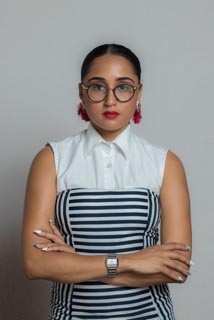What’s in a brand?
The premise of the second article you’ll be seeing from me, #Made in Guyana, is to really highlight Guyanese-made products on the market that may not be easily recognizable. As may be intonated by the hashtag (#) in the name, this started on Instagram stories, by just tagging things I used or art I saw. Very often my post was paired with, I can somewhat shamefully admit, awe at the packaging and overall delivery of the product. Now, I didn’t feel it enough to just give an honest user experience, I also felt it vital to the overall growth of the local product sector to review the branding and packaging. This is a great time for me to let everyone know that what will be published are solely my views, and not the views of the editorial team that have approved printing.
It would be remiss of me, however, to so freely offer up criticism on peoples’ efforts without also offering help—or at least suggestions as to where they can get help. So this week I want to talk about a few ways to improve overall branding without having to invest a huge amount of money. It should be said, however, that as a company with sales and financial goals, you should have a budget allotted to branding and marketing because it is critical—imperative—that you align all facets of your product and company and that they are clearly articulated in the end product and what the buyer sees first. I can gleefully admit that I am constantly buying things based on whether I like their logos or not. Before I understood wine, I made my choice purely on that reasoning—and I will guarantee you I am not an anomaly—there are plenty others doing the same thing.
(Image via NelaDunato.com)
Before we get into the physicality’s of
this process,
there are questions that need to be
asked:
1. Of yourself – what are you trying to
say? Define
the intent of your company.
2. Of your customer—who are you
selling to? Define
your target market.
3. Of your product — what are you
selling? Define
your product offering.
Visually, there are various components of the physical aspect of the brand that are extremely important. These are the things that your customer comes in direct contact with; your logo, style, fonts, images—all things that visually represent your brand. These are the things that most people automatically think about when someone says branding. Whilst they are critical components, they are not the only ones necessary to build a sustainable brand.
(Image via NelaDunato.com)
There are sites I use that have helped me over time,
like:
1. Pinterest.com—which is my absolute favourite social media site— that is great for inspiration and building visual representations of what you want your brand to be.
2. Canva.com is a fantastic platform that is mostly free—this allows you to create logos, posts—almost all marketing media at a freemium (a business model, especially on the Internet, whereby basic services are provided free of charge while more advanced features must be paid for.)
3. Youtube.com – Listen Youtube University can sit you through the learning of basically anything under the sun, you just need to look for it.
What I really want to affirm is the value that business owners need to place on this aspect of their product—and more importantly that this value is something worth investing in. There are a number of designers whom you can turn to if you know this is something you want to invest in — a few that I have been following are:
1. Chontelle Sewett of @ChanseDesigns
2. Ranveer Rickford of @FuzeArts
3. Chris Taylor of @TayloredArts
If you want more information I’ll have the links to some additional resources posted on my website buildingbrooke.com, the day after this article is published.
The opinions stated here are those of the writer, Brooke Glasford alone, and do not reflect the views of The Stabroek Business.
